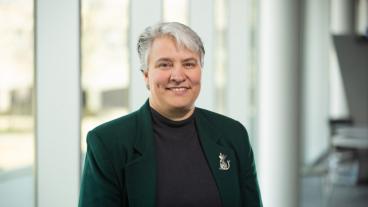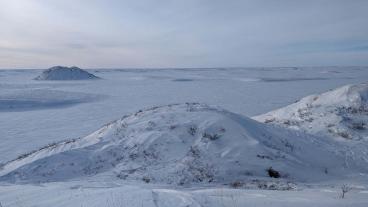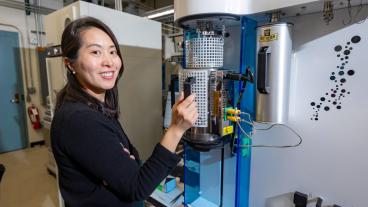A Colorado School of Mines professor is leading an international research effort to strengthen understanding of the tradeoffs between food, energy and water in agricultural basins.
Reed Maxwell, Rowlinson Professor of Hydrology and director of the Integrated GroundWater Modeling Center (IGWMC) at Mines, is the U.S.-based principal investigator on the collaborative project, which is being funded through the National Science Foundation in Washington, D.C., and NSF China.
Co-PIs on the project are Laura Condon, a Mines alumna now on the faculty at the University of Arizona, and Chunmiao Zheng and Yi Zheng, dean and associate dean at Southern University of Science and Technology in China. On the U.S. side, NSF funding will total $500,000 over three years.
The U.S. and Chinese researchers will work together to study two large-scale agricultural basins, the Central Valley in California and the Heihe River Basin in China, applying state-of-the-art integrated hydrologic models to both basins to better understand weaknesses in the managed food-water-energy systems.
“Together, these basins represent billions of dollars in economic productivity and produce millions of megawatt hours of electricity every year,” Maxwell said. “While the two basins are in many ways similar – water flows from high in the mountains to nourish crops below – there are key differences in their history and management that we can learn from.”
Maxwell has been studying California’s Central Valley off and on for the last 10 years. His counterpart in China, Chunmiao Zheng, has studied the Heihe for a similar length of time. Zheng is also a member of the IGWMC advisory board.
“The Central Valley is all of our agricultural problems in a microcosm,” Maxwell said. “It’s a huge economic engine and it has all the things we care about in these kinds of systems – it has snow, mountain-front recharge, groundwater, groundwater pumping, lots of water management, hydropower, urbanization. It’s such a rich place to study these kinds of issues but one that’s also very real and of huge importance to the U.S. economy.”
Like the Central Valley, the Heihe is a mature agricultural region located in a geographic area prone to drought. Water is managed differently in China’s second-largest inland river basin, though, with a lot less active intervention than in the Central Valley.
The sophisticated hydrologic models developed by the U.S. and Chinese teams to study their own basins are designed to capture connections between humans and natural systems not possible with previous modeling approaches.
Both models will be applied to both basins at the same time, with the goal of exploring how the vulnerabilities of food and energy systems differ, where conflicting interests can lead to system inefficiency and environmental degradation, and the advantages of applying integrated hydrologic models to these human systems.
“We always try to say these systems are more alike than they are different so a lesson learned in the Central Valley applies to all of these agricultural systems worldwide. But we’re not really sure about that. We don't really know that what we learn in the Central Valley is transferable somewhere else,” Maxwell said. “This gives us an opportunity to say OK, here’s a similar-type behavior in the Central Valley and the Heihe and either they are different or they are the same.”
As part of the project, Mines will also conduct educational outreach in Chinese primary schools around hydrology and water resources, taking educational modules that were developed by IGWMC education outreach coordinator Lisa Gallagher and currently reach more than 7,500 Front Range students a year and bringing them into Chinese classrooms.
CONTACT
Emilie Rusch, Public Information Specialist, Communications and Marketing | 303-273-3361 | erusch@mines.edu
Mark Ramirez, Managing Editor, Communications and Marketing | 303-273-3088 | ramirez@mines.edu



